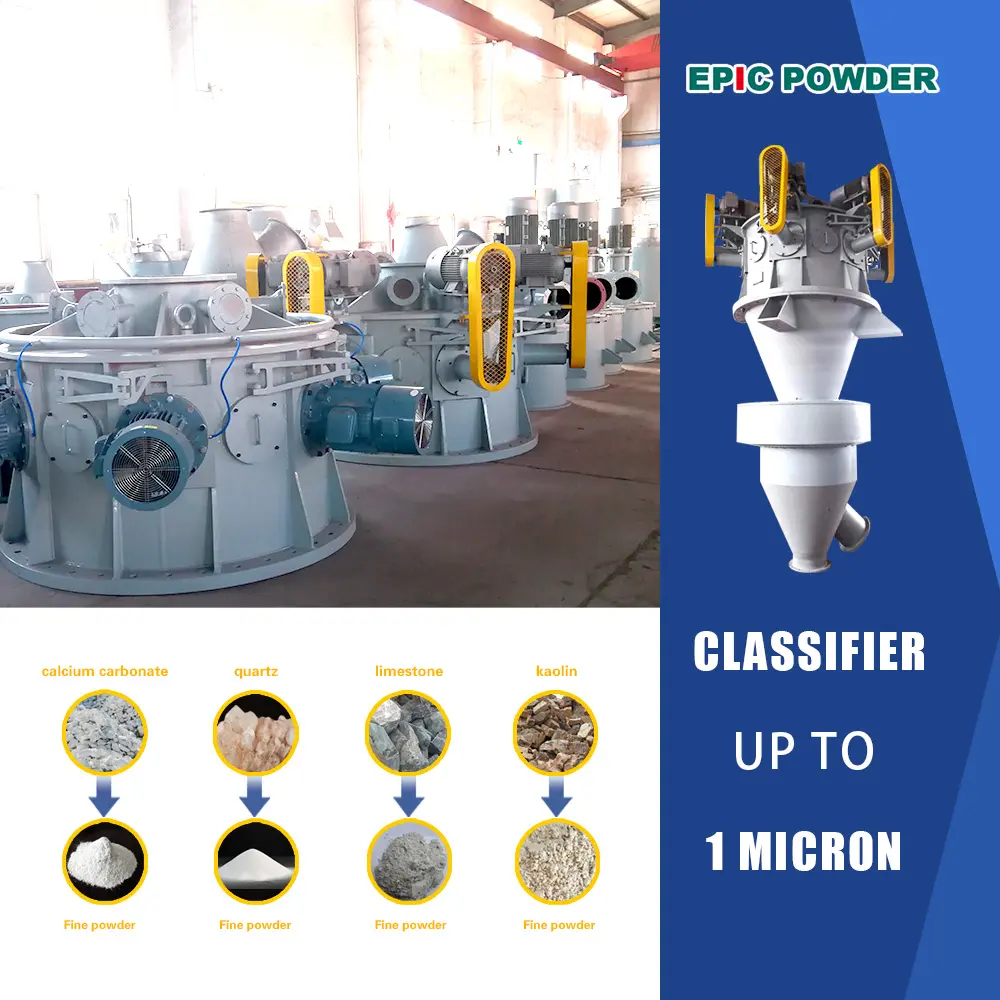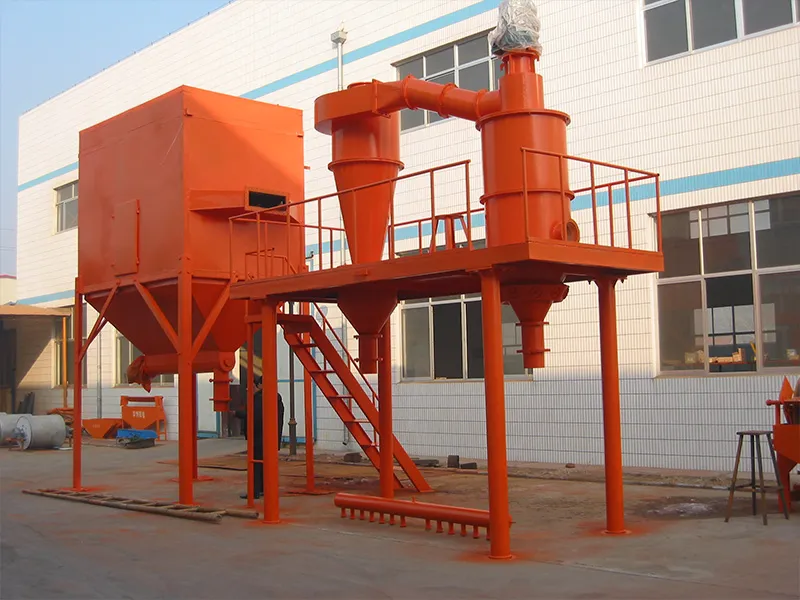In modern industrial applications, ultra-fine powder products must often fall within a specific particle size range. During the crushing process, only a portion of the product meets the required fineness, while the rest requires further grinding. Failure to promptly remove fine powder can lead to energy waste and over-crushing. Additionally, when particles are refined to a certain extent, simultaneous crushing and agglomeration can occur, causing larger particle clusters that degrade the crushing process. The key to solving these issues lies in implementing fine classification equipment. Used in conjunction with ultra-fine grinders, air classifiers promptly separate the qualified fine product, returning coarse particles for re-grinding. This enhances grinding efficiency and reduces energy consumption.
As the required powder fineness increases and production volumes grow, the difficulty of classification also rises. Fine classification technology has become a pivotal aspect in the development of mechanical powder production techniques.

Selection Principles for Air Classifier
Air Classifiers separate particles based on their size by leveraging forces such as centrifugal force, gravity, and inertia, which cause particles to follow distinct trajectories. This process directs particles of different sizes into separate collection devices. Air Classifiers come in various types, each operating under different classifying principles to achieve specific particle size ranges. When selecting classifying equipment, consider the following principles:
1. Product Fineness and Particle Size Distribution
Ensure the selected classifying equipment meets the design requirements for product fineness and particle size distribution.
2. Comprehensive Performance Comparison
When material type, feed particle size, required fineness, and particle size distribution are consistent, compare classifying equipment based on processing capacity, fine powder extraction efficiency, single-machine throughput, energy consumption per unit of product, equipment stability, automation level, maintenance performance, and dust collection efficiency.
3. Classifying efficiency and Precision
Classifying efficiency is a critical indicator of a classifying method’s effectiveness, especially in industrial applications. Even if a method produces a narrow particle size distribution, low Classifying efficiency renders it impractical for industrial use. Ideal classifying completely separates particles at the classifying point, ensuring smaller particles do not mix with coarse products and larger particles do not contaminate fine products, achieving 100% Classifying efficiency. Efficiency metrics should quantitatively assess classifying clarity and comprehensively evaluate initial classifying results.

4. Energy Consumption and Throughput
The total energy consumption of the air classifier, filter, and suction fan, divided by throughput, represents the specific energy consumption. This metric reflects the economic viability of the classifying process and should be a key consideration during equipment selection.
5. System Configuration
When pairing a fine classifier with an ultra-fine crusher using a shared airflow system, adopt a one-to-one configuration (one crusher paired with one air classifier) or a series configuration with multiple Classifier. For parallel configurations with two or more Classifier, include an intermediate silo and an independent airflow system for each air classifier. The standalone processing capacity of the air classifier should slightly exceed the discharge or output of the preceding crushing operation.
6. Testing for Reliability
To ensure advanced and reliable selection, conduct material-specific industrial production or trial data tests on a prototype before finalizing the equipment choice, especially if no prior data exists for the same material.

Output Calculation Method for Air Classifier
Air Classifier typically produce two products: fine and coarse. The quantities of these products depend on the content of particles smaller than the specified size in the feed and the classifying machine’s efficiency or fine powder extraction rate.
When feed particle size distribution and product fineness requirements are defined, the output of fine and coarse products can be calculated using the following formulas:
– Fine product output: P1 = Pa × γ × E
– Coarse product output: P2 = (1 – k) × (Pa – P1)
Where:
– P1: Fine product output (t/h)
– P2: Coarse product output (t/h)
– γ: Percentage of particles smaller than the specified size in the feed (%)
– E: Extraction rate of particles smaller than the specified size (%)
– k: Material loss rate during classifying (%)
– Pa: Classifier feed rate or processing capacity (t/h)
Example Calculation
Consider a classifier processing ultra-fine calcium carbonate powder with a feed rate of 2 t/h. The feed contains 70% particles smaller than 10 μm (d70 ≤ 10 μm), and the required fine product must have 97% particles smaller than 10 μm (d97 ≤ 10 μm). The machine’s extraction rate for particles below 10 μm is 69%, with a material loss rate of 1.0%. The fine and coarse product outputs are calculated as follows:
- Fine product output: P1 = [2 × 70% × 69% × (1 – 1.0%)] / 97% = 0.986 t/h
- Coarse product output: P2 = (1 – 1.0%) × (2 – 0.986) = 1.004 t/h
Epic Powder: Your Partner in Precision Powder Processing
For industries seeking solutions in fine classifying and ultra-fine powder production, Epic Powder offers state-of-the-art equipment designed to maximize efficiency and precision. Our advanced Air Classifiers are engineered to deliver superior classifying accuracy, high throughput, and low energy consumption, ensuring optimal performance for your production needs. Contact Epic Powder today to elevate your powder processing capabilities and achieve unparalleled product quality with our industry-leading technology.

Thanks for reading. I hope my article helps. Please leave a comment down below. You may also contact EPIC Powder online customer representative for any further inquiries.
— Jason Wang

